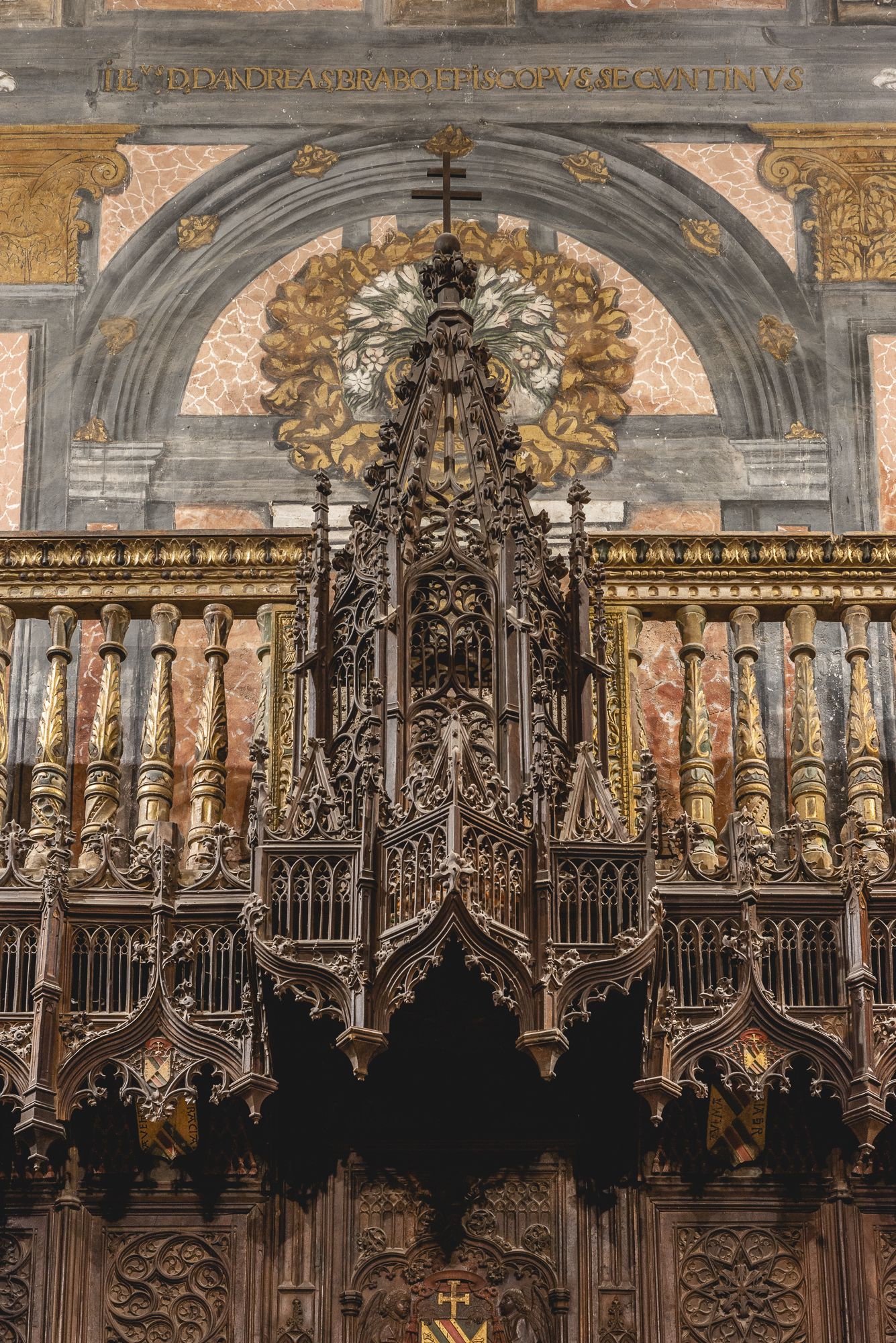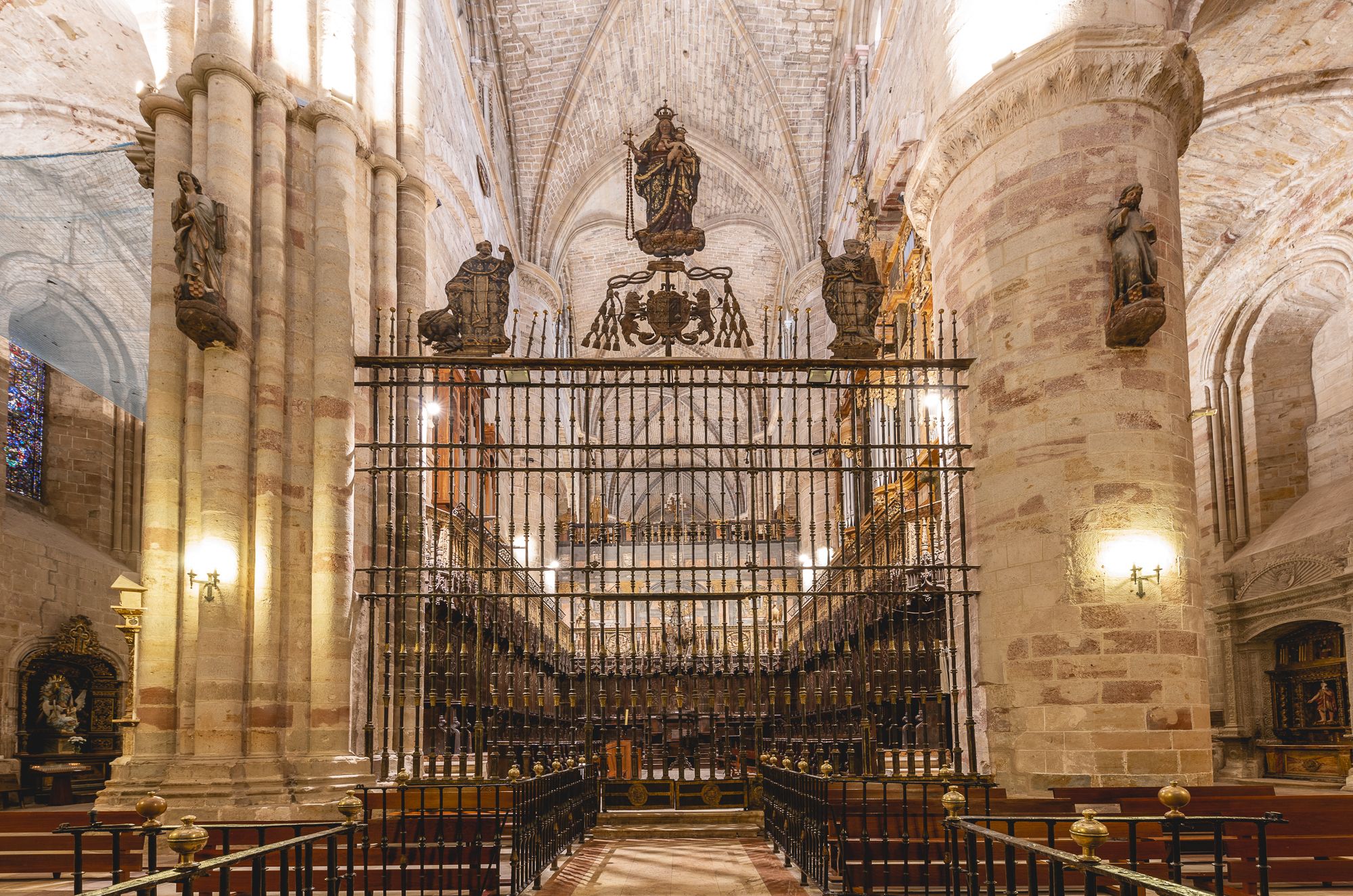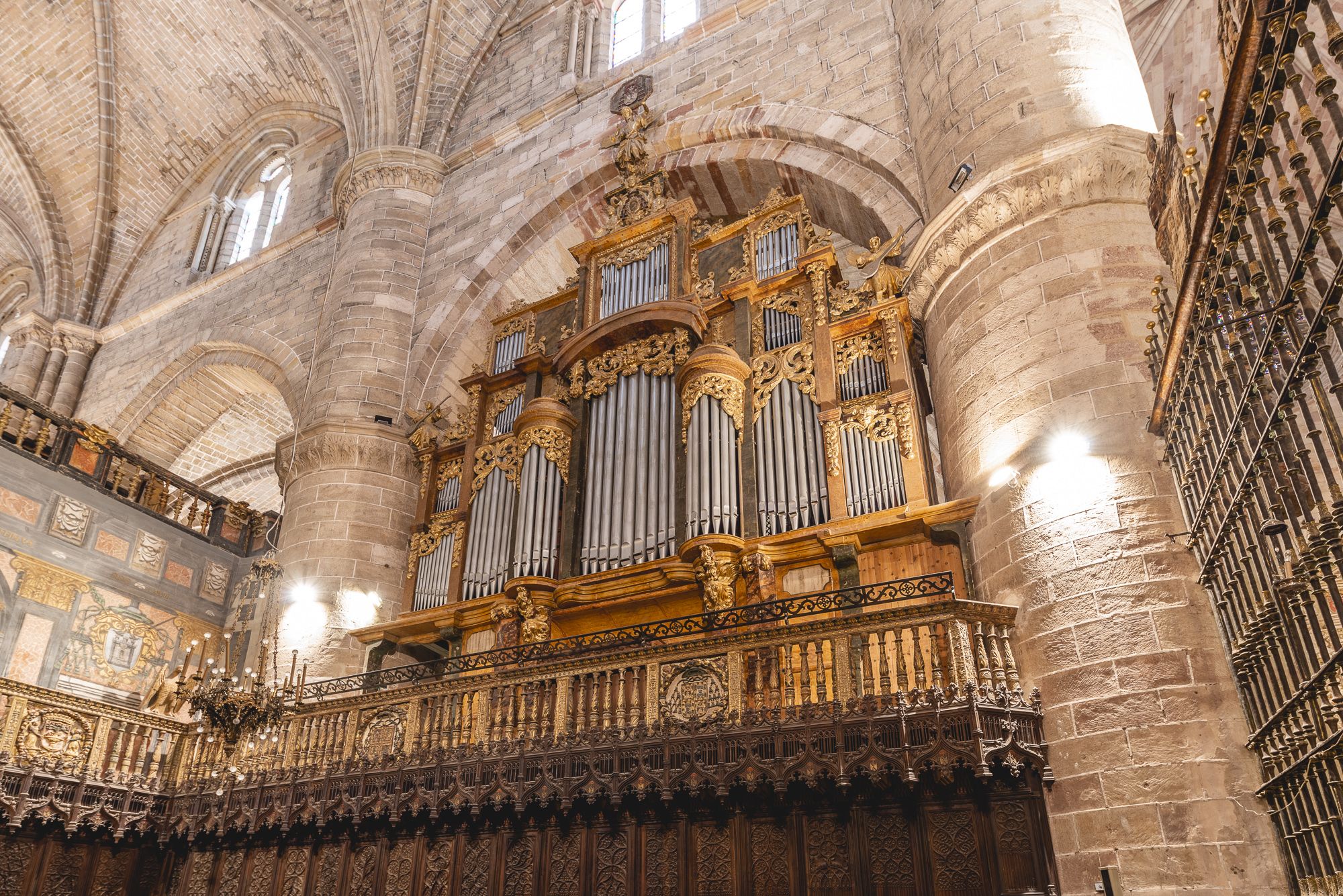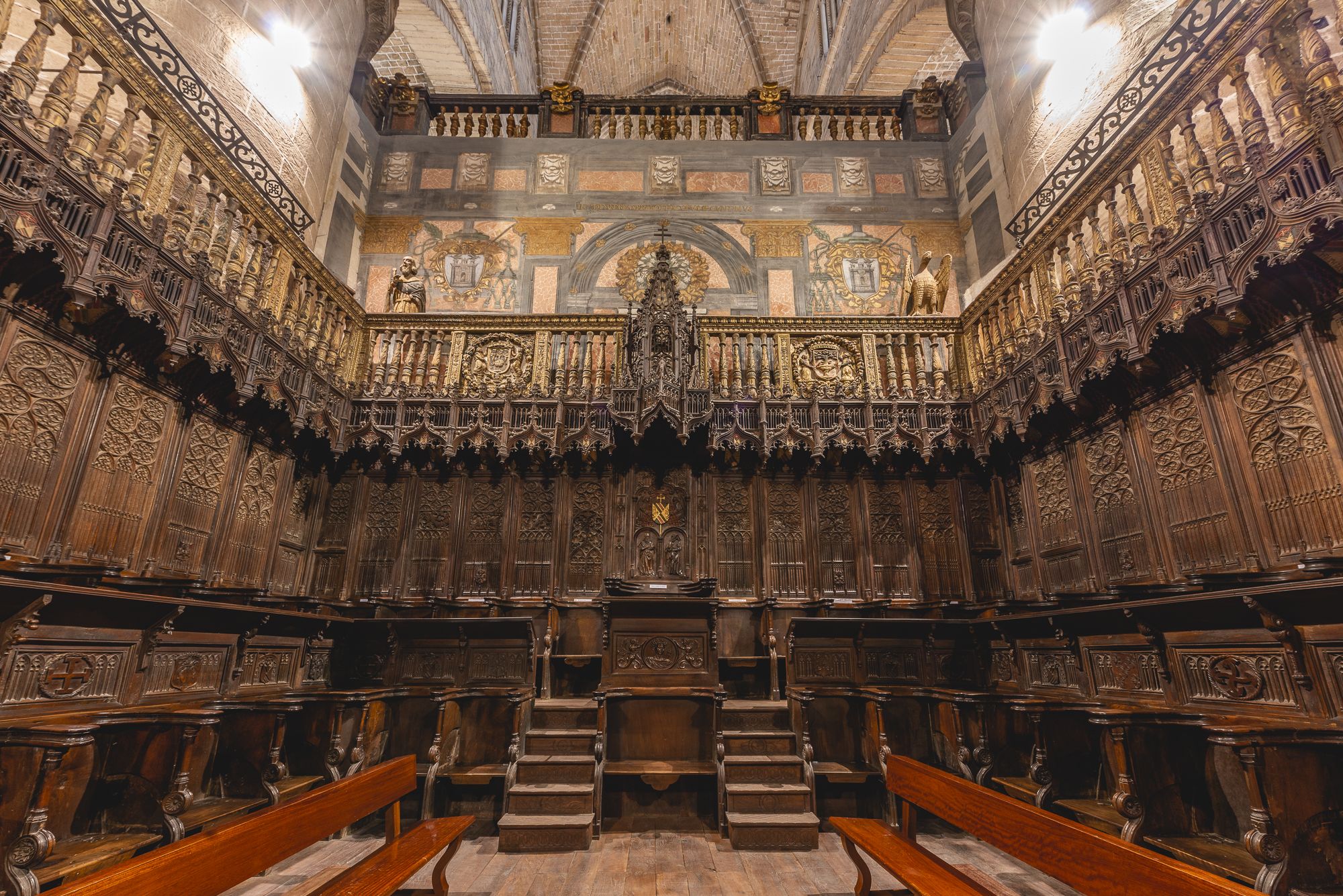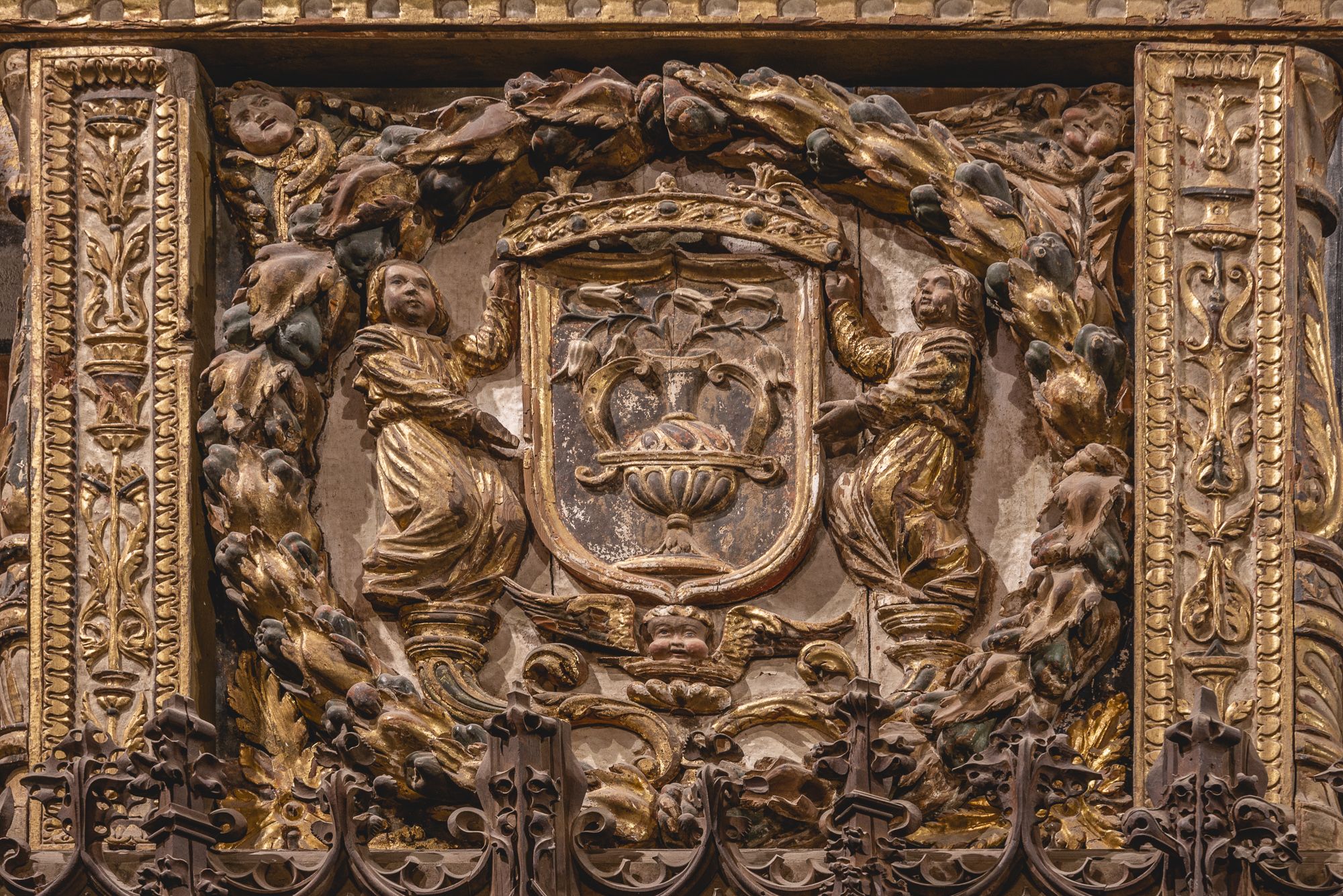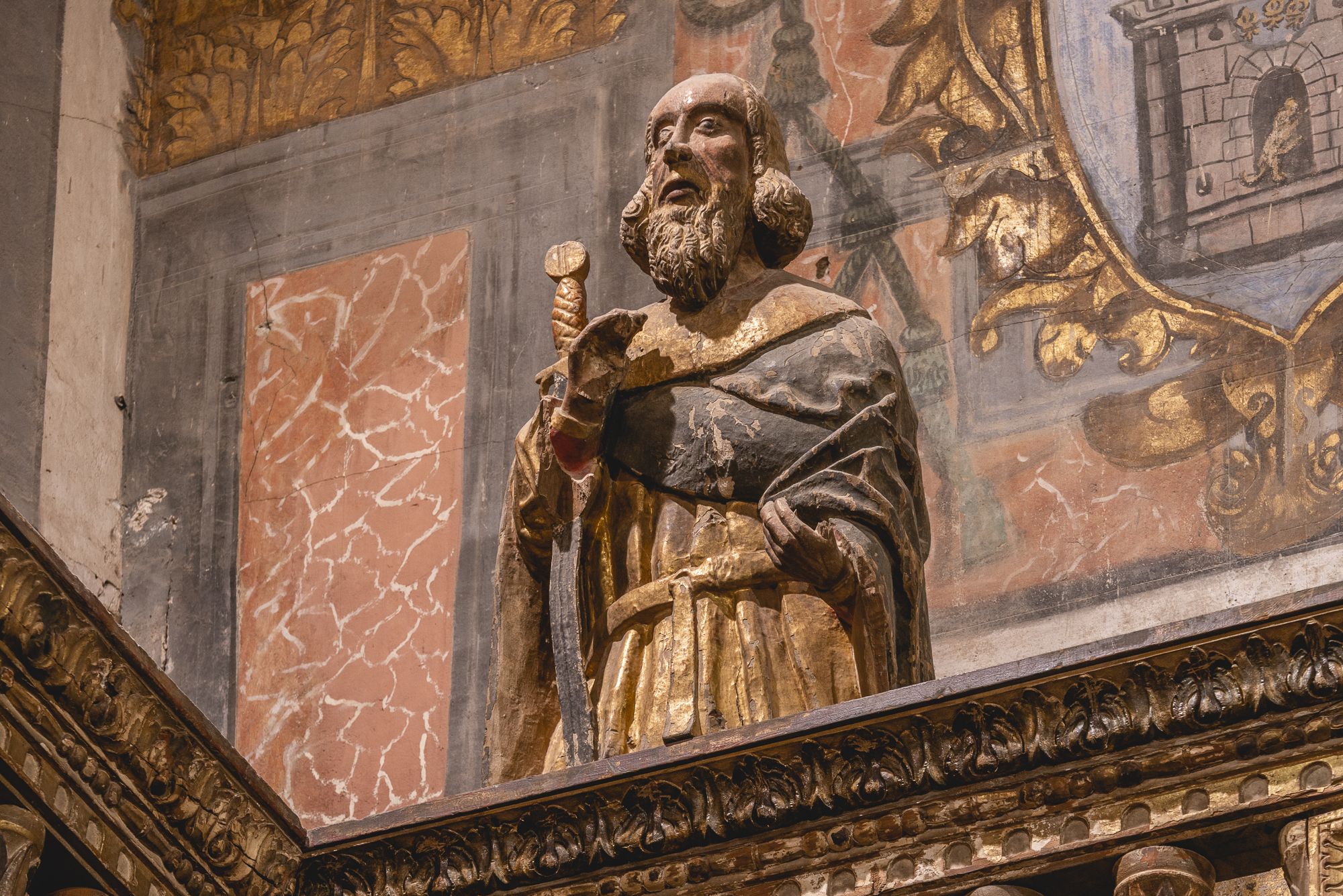he choir is a large, dark, austere element situated in an elevated position in the center of the nave. The choir began to be situated in the center in France during the 12th century, but were left open until the 13th and 14th, when retro choirs began to be added. This was the custom followed in Sigüenza Cathedral.
The fabric used is hewn stone, and the interior is furnished with magnificent choir stalls of polished, aged walnut wood.
The three-sided choir has a rectangular ground plan. It is made up of 84 stalls forming two orders, the second placed on a higher plane than the first. Both orders are finely carved by Spanish artists, given the surface development, with its air 01 Castilian abstract gothic taste (geometric decoration without images) of the late-15th century. The choir was built with the patronage of Cardinal Mendoza, and the Canonical Hours of the new choir were celebrated on 8 December 1491.
The lower order 01 choir stalls is for use by beneficiaries and singers. At the height of the armrests of these stalls are backs with complex tracery of Gothic arches and foiled circles over which rest the lecterns of the high seats of honor. The decoration of the lower stalls is of less importance than that of the upper stalls, used by canons and guests or invited laymen, or those with the right to sit in the choir under the canopy with Florentine arches, bordered with trimmed crenellations of extraordinary beauty and elegance. The backrests are separated by fine pilasters which terminate in needles. The delicately carved panels are the work of Rodrigo Alemán (1495),
the finest wood carver of the last decade of the 15th century, known in the documentation of the Chapter as Rodrigo Duque; Francisco de Coca (1498); Gaspar (1503); Petijuán (1518); Juan de Amores (1531-1532); Diego López (1499) and Martín de Vandoma of Sigüenza (1554-1578) and form an outstanding exponent of their creativity, as taking the curved line as they base, a different pattern is given to each.
Here we find spaces decorated with a wide variety of flora, forming, despite the multitude of details, such a harmonious work overall that at first glance all the motifs appear to be the same. The geometric combinations of the carving are multiple, demonstrating the enormous wealth of imagination these master carvers possessed, as not one is repeated.
This, then, is a fine example of the degree of perfection reached by the craftsmen working on the carvings in Sigüenza Cathedral during the 15th century. The hands which carried out these splendid works reached heights immortalizing the names of Martín de Vandoma of Sigüenza and Rodrigo Alemán.
The sides of the stalls are formed by flutings supporting small columns bearing the high armrests, completely unadorned these last.
The seat panel s swing up and down, so that they can be lifted to leaf space for a person to stand between two armrests, leaving a second seat exposed, formed by a piece of wood in the form of a sill or support known as a patience or misericord, which could be rested on when the person standing before the seat of honor or lectern so needed. The series of high armrests also serve as supports when worshippers are standing. The misericords are decorated with anthropomorphic, zoomorphic and phytomorphic motifs, capitals and a kind of smooth brackets.
The bishop’s throne, larger than the others, is in the center, forming a separate group. It is elegant and severe, decorated at the rear by relieves of two prophets beneath semicircular arches over which two tenant angels hold the heraldic coat of arms of Cardinal Mendoza, polychrome. Over this are pinnacles, spires, leaves, etc., combined harmoniously.
The bishop’s throne also has knobs and misericords with «drolleries» typical of Nordic sculptors. These figures are reminiscent of the style of Nordic artist Rodrigo Alemán, and if we take into account that this master
craftsman is linked to the Chapter, and that he came to Sigüenza on various occasions, it seems to us
legitimate to consider that he had a personal or at least indirect influence on this important element of the choir stalls.
Rodrigo Alemán must have drawn sketches and later sent assistants to help carry out the work, and it is for this reason that his influence can be so clearly detected. Crowning the entire section of choir stalls are two galleries for the organ, with high balustrades, Plateresque in style and dating to the 16th century, elaborated by the sculptor Calderón (1524). The choir is closed, opposite the high altar, by a magnificent Renaissance grille, made by the cathedral school of local grille-makers.
